► Ferrari Roma review – in UK and Italy
► It’s Maranello’s new £171k 2+2 coupe
► 611bhp, 3.4sec 0-62mph, new tech galore
Mid-engined Ferraris require little explanation. Founder Enzo famously may not have been a fan of the layout, preferring his horses ahead of his cart, but Maranello has long since established itself as a master of the art of otherworldly yet accessible mid-engined performance. Cars like the F8 Tributo and new SF90 showcase the marque’s technological and artistic flair, while also linking its road cars to Formula 1. Elemental and pure, they’re uncomplicated in their remit and their appeal.
It’s not always so straightforward with Maranello’s front-engined cars. The astonishing, V12-powered 812 Superfast is often lumped in with GTs but is, in fact, nothing of the sort, being instead a hypercar ever willing to sweep sideways on a breath of throttle and force you to re-learn everything you thought you know about fast. And then there’s the Portofino, Maranello’s folding-hardtop entry-level model. In many ways the least Ferrari-like Ferrari money can buy, it’s also the first Ferrari many buyers experience.
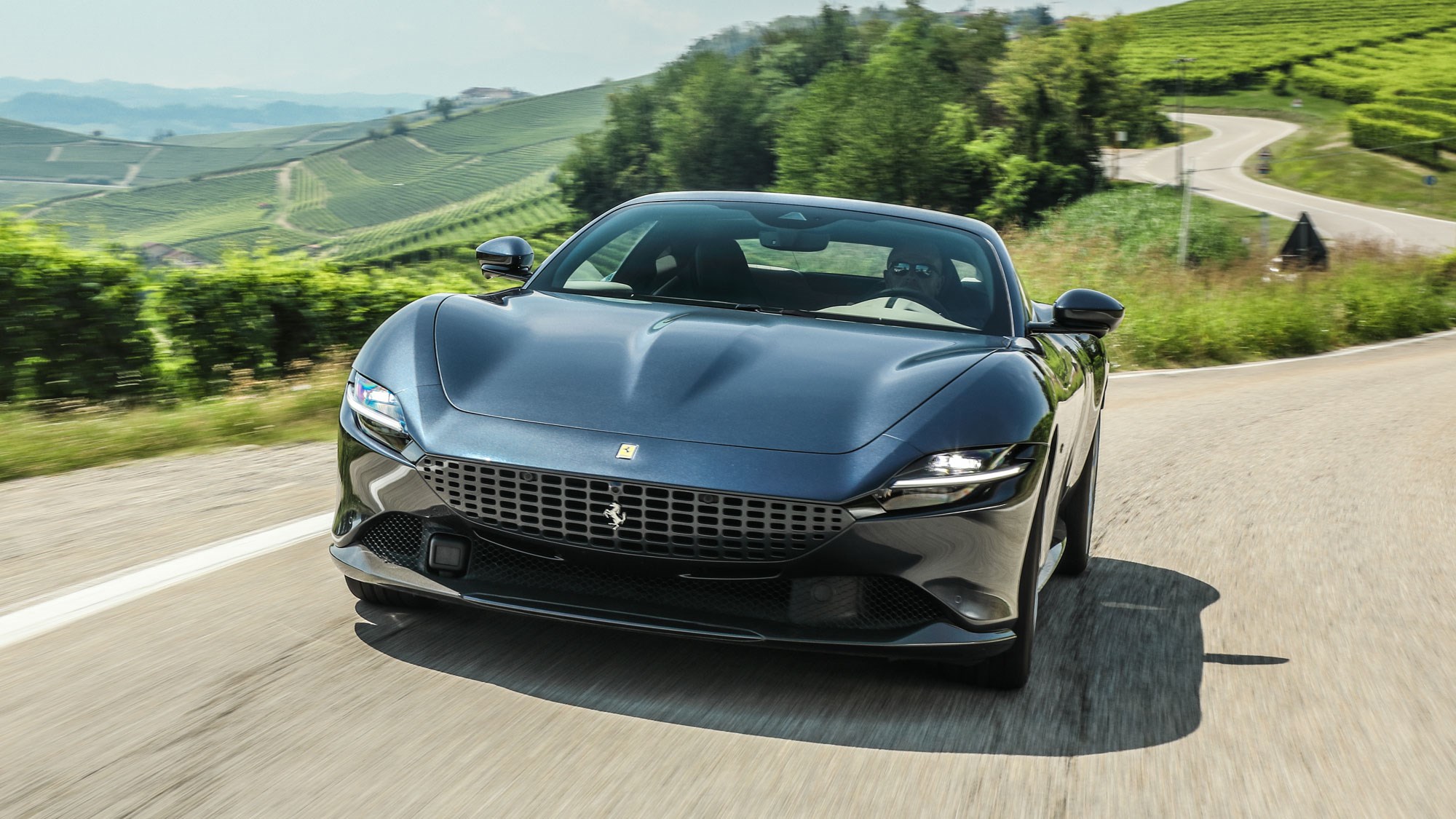
And now there’s the new Ferrari Roma, the 2+2 coupe unveiled in late 2019. Beautiful and redolent of the past in its ideals if not, thankfully, its design, the Roma (£171k) sits just above the Portofino (£166k) and promises to be both a GT and a sports car, as well as the first of a new breed of more usable, everyday Ferrari. We shall see.
We’ve now driven it extensively on UK roads, as well as on home turf around Maranello, so read on for our fully updated Ferrari Roma review. Does it work in right-hand drive, on scarred British back roads in spring weather? We’re about to find out…
So, the Roma’s a Portofino with the roof welded shut?
Kind of, but much of what differentiates the two bodes well for the Roma’s sports car aspirations. The aluminium structure is based on that of the Portofino – same wheelbase, for instance – but Maranello claims 70% of the body and structure is new or substantially modified (the new bodywork surely for the lion’s share of that 70%). Weight is down, by a useful 100kg or so, and the centre of mass is lower, thanks to the deletion of the Portofino’s bulky folding roof mechanism.
So, there’s less weight, and it’s carried lower. This, in turn, has allowed Ferrari to run the same front spring rates as the Portofino and 10% softer rear springs while still reducing bodyroll 10% for a given rate of lateral acceleration. This is all good news, as is the fact that is the first Ferrari GT to get a five-position manettino (your options run from Wet through to Race, and pushing the toggle now accesses the ever-useful bumpy-road mode).
The good news keeps coming. You also get Maranello’s latest driver-assist electronics, Slide Slip Control 6.0 and Ferrari Dynamic Enhancer, to let you goad the rear axle out of line with a reliable safety net in place. This is also the first Ferrari GT to get proper underbody aero, with vortex generators in the floor to generate useful downforce despite the very clean body’s conspicuous lack of wings.
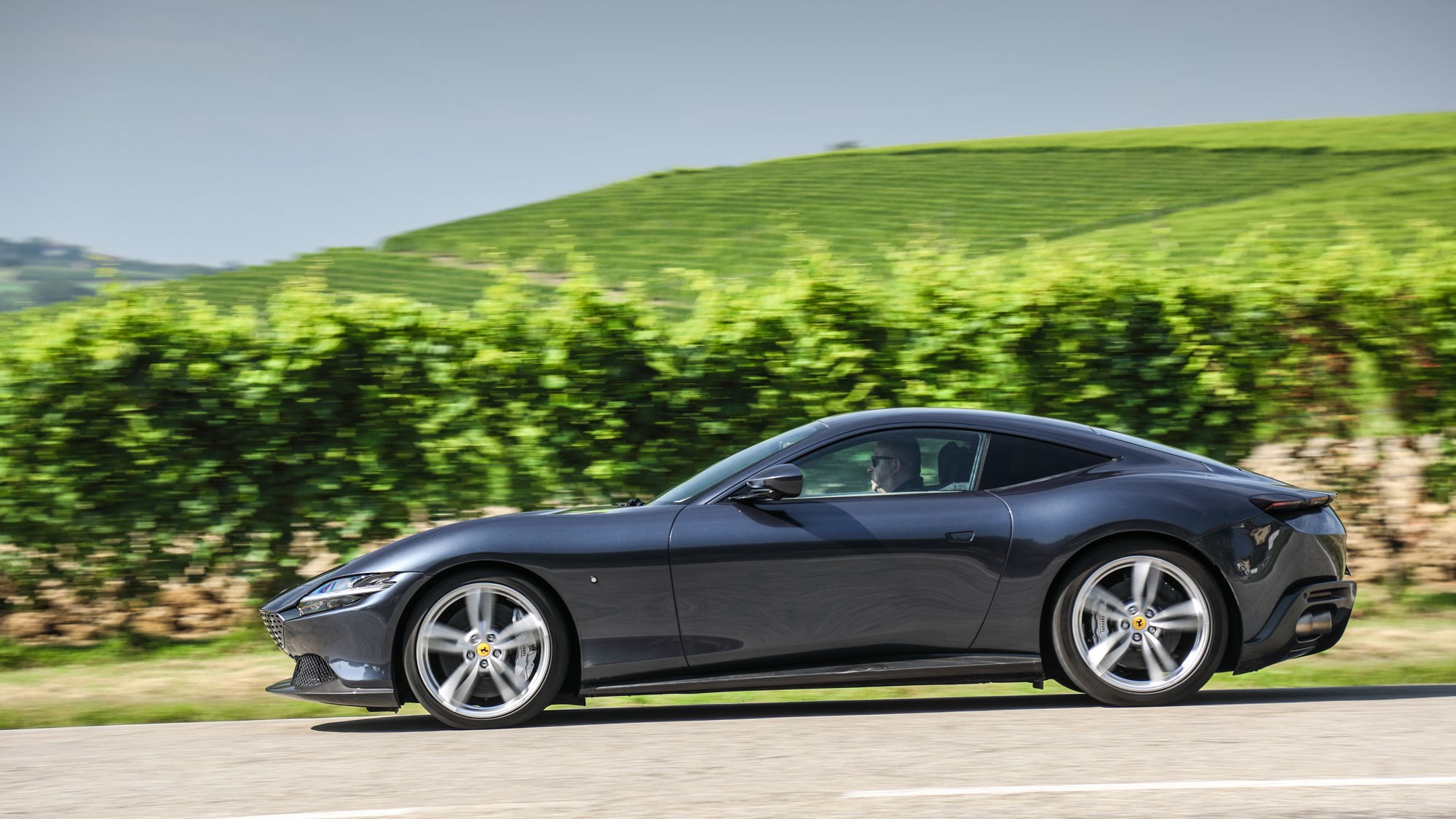
Any new stuff?
Plenty. The Roma’s V8 isn’t all-new, being closely related to that of the Portofino, but it features a new valvetrain and more aggressive cams with increased lift, an exhaust system with reduced back pressure and sensors which let Ferrari safely wring another 5000rpm from the twin-turbos. The net result would be good for 35-40bhp over the 592bhp Portofino were the Roma not also required to wear petrol particulate filters, which knock that advantage back to 19bhp, for a total of 611bhp. That’s a huge output for one of Ferrari’s ‘entry-level’ models…
The engine drives through a new gearbox, pinched from the SF90, which is 6kg lighter, an eight-speeder where the Portofino’s twin-clutcher is a seven-speeder, faster-shifting and more efficient, with a dry-sump layout and thinner oil for reduced losses. Ratios one to seven are also shorter than the Portofino’s, for stronger acceleration, while eighth offers a lazy overdrive.
Inside, the Roma gets an all-new cockpit big on classy curves and a welcome sense of minimalism. There’s Ferrari’s new-generation infotainment, too, which debuted in the SF90. You grasp a new steering wheel (not the prettiest, with too much bulk and plastic to it, but big on intuitive functionality, including a touchpad on the right spoke with which to navigate menus on the driver’s display) and gaze upon a 16-inch multi-function curved display, capable of cycling through three views (a stripped-back racy one, a full-map ‘I’m really lost’ one and the one you’ll actually use, with a giant rev counter centre stage).
On the centre stack you’ll find a new 8.4-inch, portrait-orientated touchscreen, which looks a little low-rent considering the price but at least everything works agreeably enough.
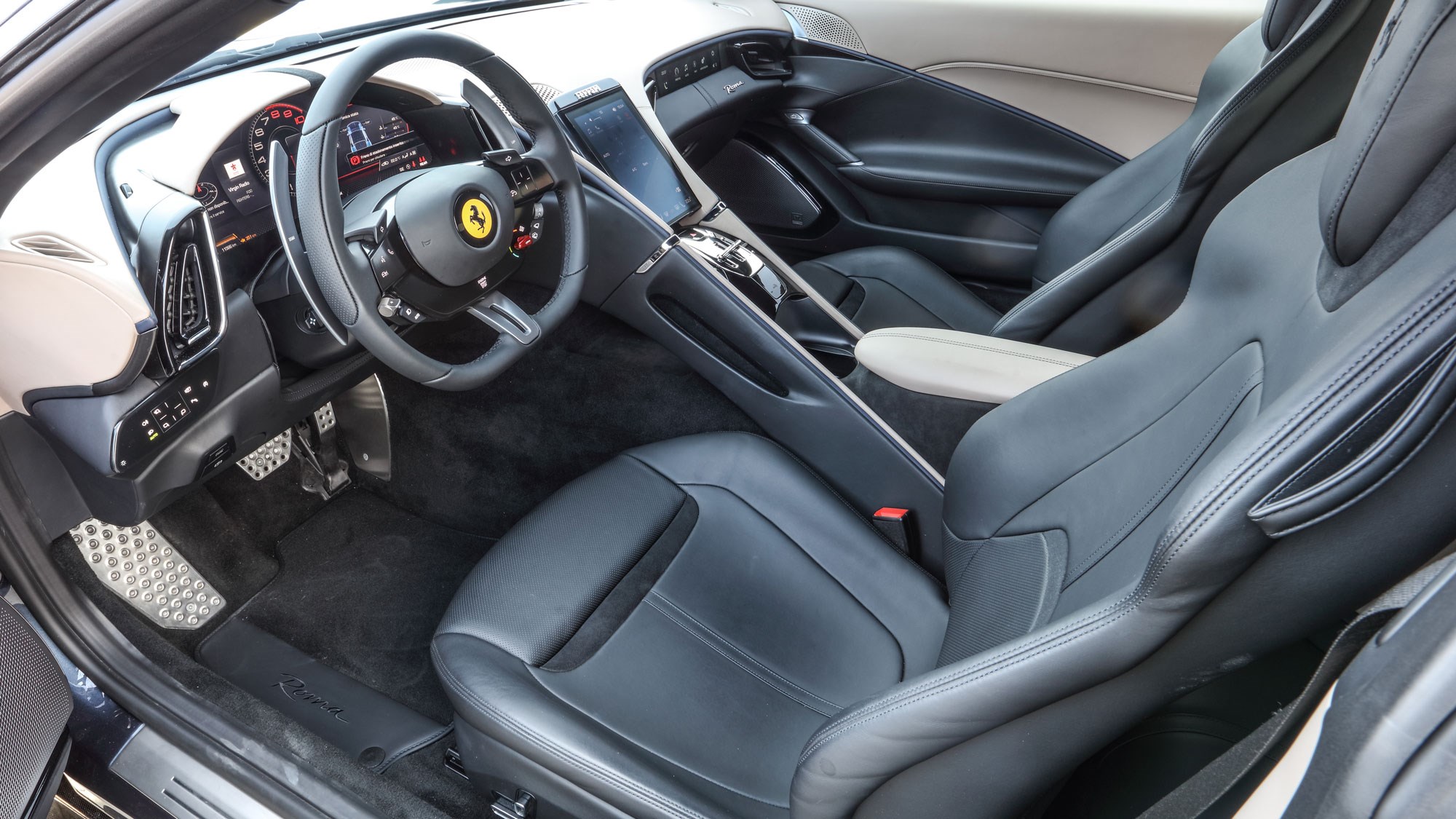
Built for comfort or speed?
There’s comfort here should you want it, though the Roma is no S-Class style isolation chamber. The seats and driving position are all-day comfortable for many drivers (but taller pilots complained of a lack of headroom and we found the RHD pedal layout a little offset) and the interior has a huge sense of occasion. With the nav talking you home and the powertrain neutered in one of the lowlier driver modes, this is an easy and pleasant place in which to while away the miles.
Exhaust noise is ever-present, and can grate after a while on boring roads, but there’s less road noise than you’d expect given the amount of rubber the car holds to road, and the multi-function wheel soon has you idly thumbing the indicators on the hub and nonchalantly flicking though menus via the touchpad.
If only there was a little haptic feedback, Audi-style, to work with (you must listen instead for audio confirmation that your input’s been registered) and less lag in the system – Ferrari insists the latter will be ironed out before production, and that Apple CarPlay and Android Auto will feature before the car reaches buyers. On the plus side the voice recognition is first-rate and ‘Ciao, Ferrari’ is roughly 700% cooler than ‘Hey, Mercedes.’
The ride, even without recourse to bumpy-road mode, is surprisingly sweet for such a poised, responsive car, the Roma breathing with some pretty abysmal surfaces and refusing to deviate from your chosen line even when you run into some rough stuff mid-corner. Such pliancy benefits both aspects of the car’s dual personality, making for comfortable miles when you just have distance to cover and the confidence to attack when you’re pushing the car harder, safe in the knowledge the Ferrari won’t be skittled off-line or caught out by mid-corner bumps.
Is it exciting though? I could get a proper sports car for £170k
You could, some with their engine behind you, rather than in front, though you’d be hard pushed to find out as explosively fast and yet as effortlessly approachable as this one. Thank a combination of the intrinsic ‘rightness’ of the front/mid layout, Ferrari’s mastery of driver support electronics and the Roma’s brilliant fundamentals: deftly calibrated suspension; keen but calm steering; awesomely powerful yet delicate brakes (carbon-ceramic).
The anchors worked well on first acquaintance, but the UK car we tested suffered a grabby brake pedal, making them hard to modulate. There’s no questioning the stopping power, but the delicate first inch of travel made it difficult to apply smoothly on our right-hand drive test car.
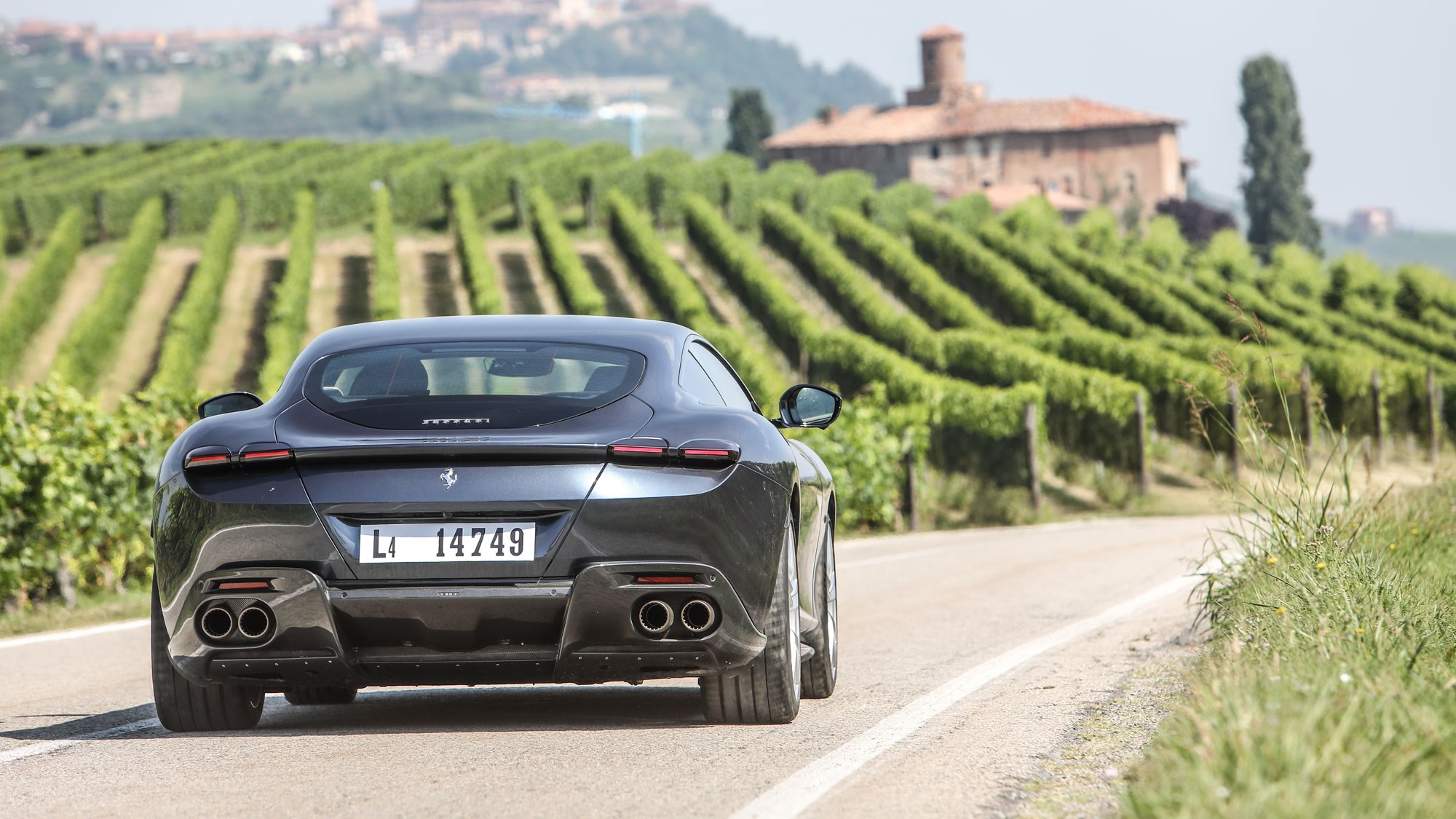
Switch up to Race, chase the power at the top of the rev range (as ever, Ferrari’s deliberately holds back torque at lower rpm, for drivability and to maintain the theatre of the top-end rush) and the Roma covers ground at a breathtaking rate, the engine’s responsiveness, strong midrange and awesome top end effortlessly dispatching multi-car overtakes and mountain passes alike. Gearshifts are complete before you know you’ve asked for them, and the car’s grip at both ends is generous and deftly communicated. The front axle’s refusal to understeer inspires huge confidence, and it feels like it’d take a huge error of judgment to get things properly wrong in the Roma, so sorted is it.
Again, there’s a duality to this handling prowess. You can go at things like a terrier, charging up and down the gearbox and stuffing the car into corners. Or you can stay in a higher gear, go easier on the throttle and brakes, and just use the car’s easy corner speed and graceful momentum to shrink cross-country distances. At a 70mph UK motorway cruise, the V8 is spinning over lazily at just 1600rpm in eighth gear; this is a super-relaxed GT.
Put it to Ferrari test driver Raffaele di Simone that, given its front-engined layout and cutting-edge driver-assist systems, the Roma might be the easiest Ferrari yet in which mortals can indulge in life at – and indeed over – the edge, and he agrees, with the caveat of environment. For him, the F8 Tributo is king in steady-state cornering, on track; the Roma the standard bearer on the road. That this Ferrari is as malleable, approachable and as forgiving as a P300 Jaguar F-Type while boasting more than twice the power is one hell of an achievement.
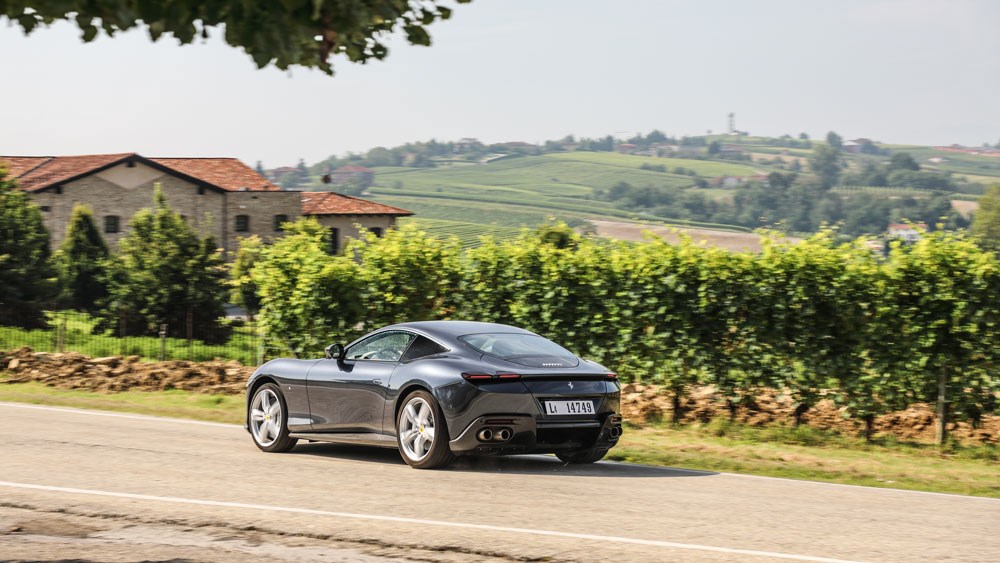
The boot is a decent space, and you can flop the (next-to-useless) rear seats down to expand space for luggage. Equipped thus, 911-style, the Ferrari Roma makes a most practical GT.
You’ll have to own extremely tiny children to able to use those rear seats, but we applaud the packaging in a sports car as svelte as this. It looks tremendous in gunmetal grey, a more discrete hue by which to make this Ferrari fly relatively stealthy under the radar.
Verdict
The GT versus sports car conflict is semantics. For me, the Continental GT Bentley is a GT; fast, luxurious, heavy, easy, but not the last word in delicacy or man/machine interplay. The Roma is, by dint of its rear seats, more conventional layout (mid-engined cars draw attention, and can intimidate) and elegant form, a more usable kind of Ferrari, though you’d still be brave (or in a most agreeable postcode) to leave the thing parked on the street overnight.
And this, being a Ferrari, is still a sports car at heart. Keener, more potent and more convincing dynamically than the Portofino, the Roma nevertheless complements that car well to give Ferrari a very attractive Boxster/Cayman-style pairing at the less expensive end of its range. Some aspects of the Roma’s interior don’t entirely convince, from the sometimes clunky and needlessly busy infotainment to the cheap-feeling shift paddles and less than beautiful steering wheel. Make sure you fit comfortably, and remember those rear seats are borderline useless.
But on the move, preferably on the kind of roads worthy of cars this special, this is a true Ferrari, one that feels impeccably timed to shine a light on the marque’s glorious past, just as cars like the SF90 forge into the future. The Roma’s the Ferrari we didn’t know we wanted but, now that it’s here, want it we most certainly do.
More Ferrari reviews by CAR magazine